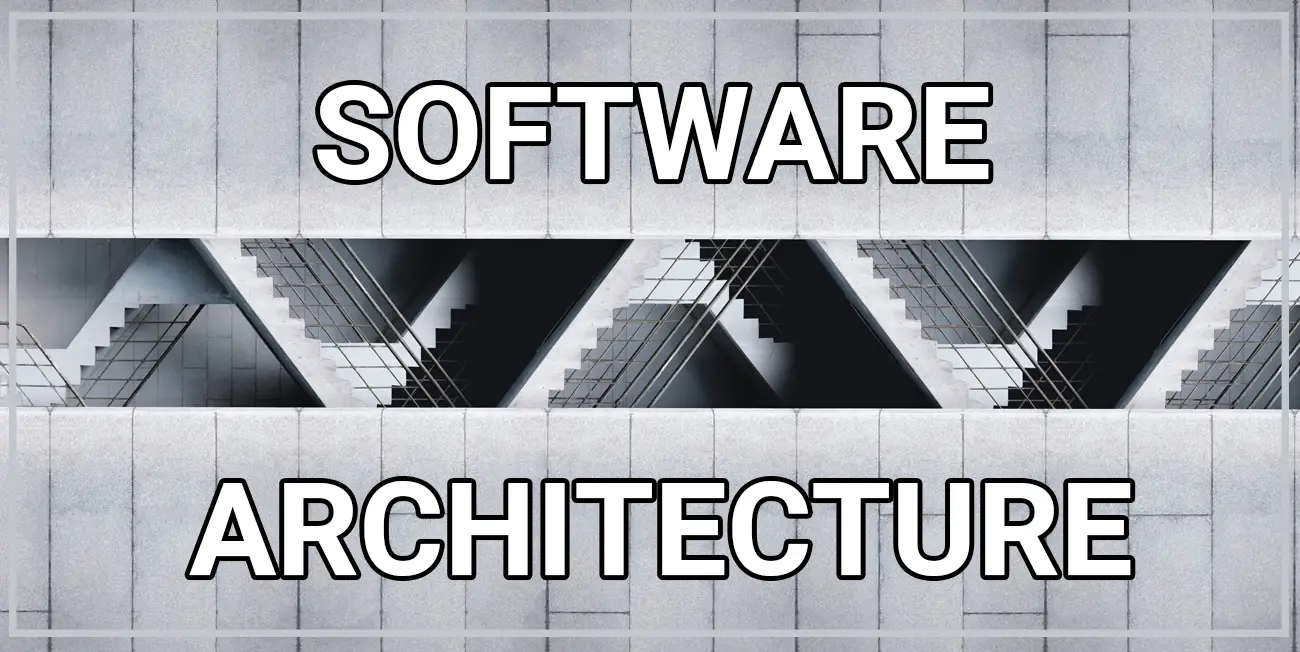We use phones, computers, and tablets every day. We run dozens of applications on them that allow us to carry out hundreds of different activities. All of this would not be possible without the software architecture. So let’s take a closer look at what software architecture is and how it works with software design.
Software architecture explained
The answer to the “what is software architecture” in short is that software architecture can be described as a blueprint showing what tasks need to be performed within the project. More specifically, software architecture, just like in construction, focuses on the fundamental structures that make it possible to build a product. Such structures consist of many elements and predefined relations that are to exist between them. It should be one of first steps in the software development process.
Software architecture is very useful because it allows you to make the most important choices regarding the application’s structure or the system. Such choices, once made, can be very costly and time-consuming to change at a later date, so such architecture should be perfected before starting work on the product. You can even say that the stage of creating software architecture is the stage of creating the foundations of the product. It depends on the architecture whether the product’s quality attributes, such as scalability, performance, and security, will be met.
Most often, software architect combines several different styles of architectural design. In this way, we avoid limitations and ensure that the resulting software system meets all the requirements.
When it comes to software architecture, you should be aware of three concepts.
Software architecture recovery is the process of determining the architecture of an existing system. The aim is to document the decisions made during its development. Documenting software architectures allows for its analysis and improvement in the future.
Software architecture erosion is the gradual degradation of the architecture of a system over time. As the system evolves, its original design may be lost due to changes made for various reasons (e.g., adding new features, fixing bugs, etc.).
In the software development industry, many patterns have been created over the years on which architecture can be based. Here are some of them.
Software architecture patterns
Model-View-Controller (MVC) pattern
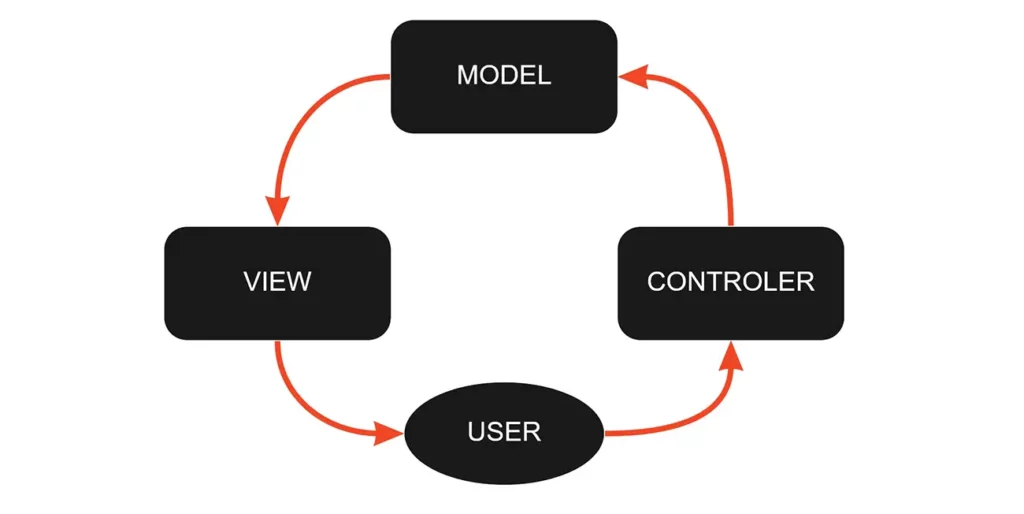
The Model-View-Controller pattern is one of the most popular and widely used software architecture patterns. It separates the application into three components – the model, view, and controller.
The model represents the data of the application and its business logic. The view displays the data to the user in a graphical interface. The controller handles user input and interacts with the model to update the view accordingly.
This separation of concerns makes it easier to develop, test, and maintain large applications. It also allows different software engineering teams to work on each component independently.
Event-Driven Architecture (EDA) pattern
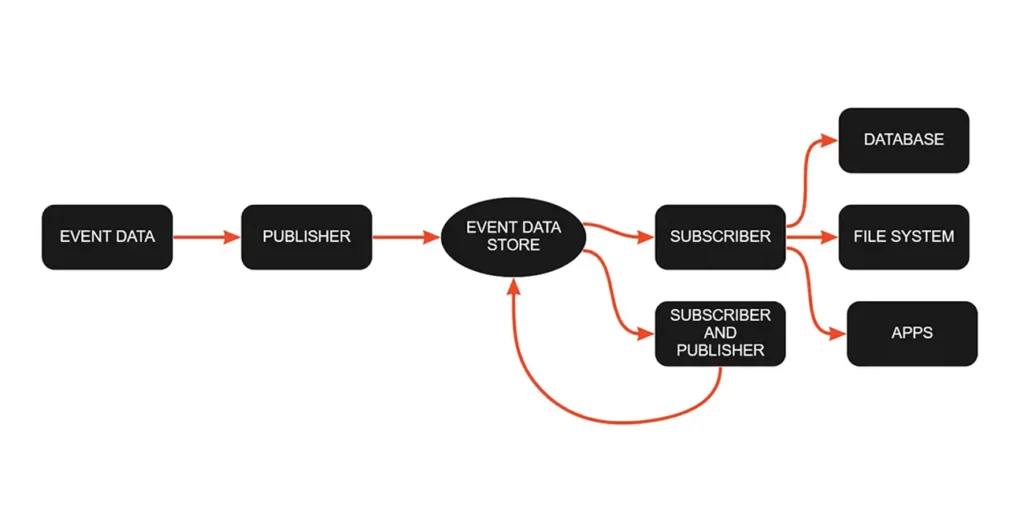
The Event-Driven Architecture pattern is based on the principle of taking action only in response to an event. This can be a user action, such as clicking a button, or an external event, such as a sensor reading.
The advantage of this approach is that it can be more responsive to changes in the environment and can handle many concurrent events. The downside is that it can be more difficult to predict the order in which events will occur, making debugging and testing more challenging.
Microservices Architecture pattern
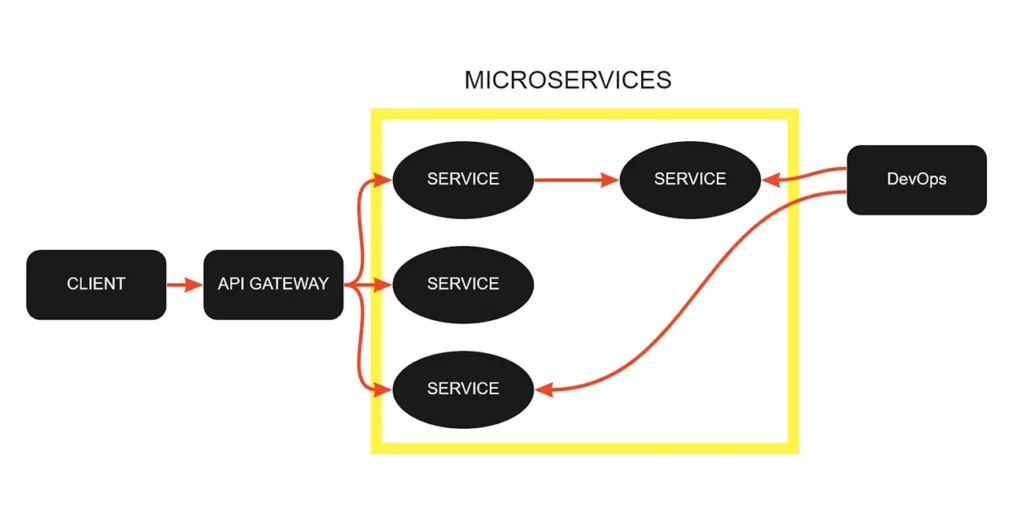
The Microservices Architecture pattern is based on the principle of splitting an application into small, independent pieces that can each be deployed and operated independently. This allows for greater flexibility and scalability as each microservice can be updated or replaced without affecting the others.
There are a few drawbacks to this approach, however. First, it can be more difficult to manage and monitor a large number of small services. Second, inter-service communication can add complexity and overhead. Finally, it can be more difficult to ensure data consistency across microservices.
The client-server pattern
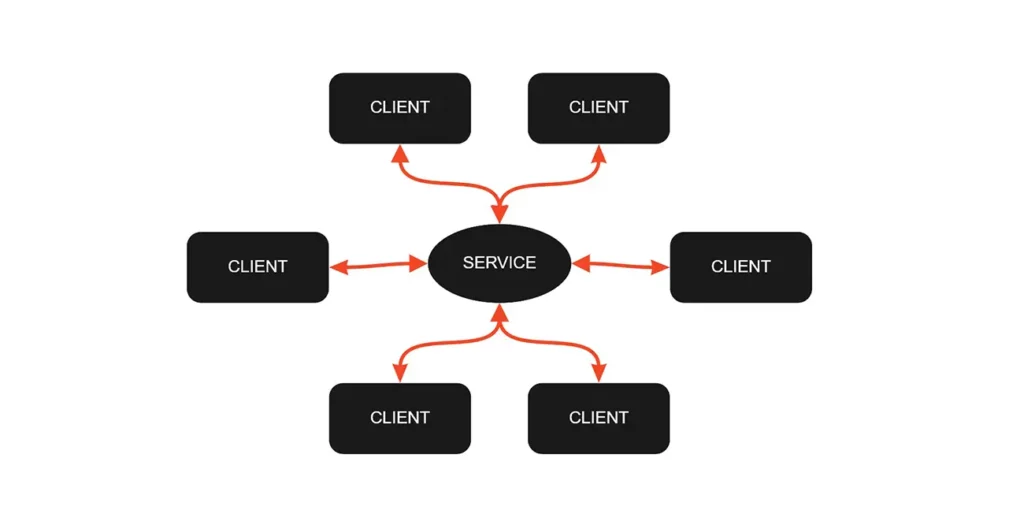
is one of the most common in software architecture. It is based on the idea of a central server providing client services. This pattern is often used for web applications, where the client is a web browser, and the server is a web server.
The client-server pattern has many advantages. First, it allows for a clear separation of concerns between the client and the server. Second, it can be easier to scale than a single monolithic application. Third, it can improve security by keeping sensitive data on the server and only allowing authorized clients to access it.
There are a few drawbacks to the client-server pattern as well. First, there is typically a single point of failure with this pattern – if the server goes down, the entire application goes down. Second, this pattern can be more complex to implement than a single monolithic application. Finally, maintaining and updating a client-server application can be more difficult than a single monolithic application.
The controller-responder pattern
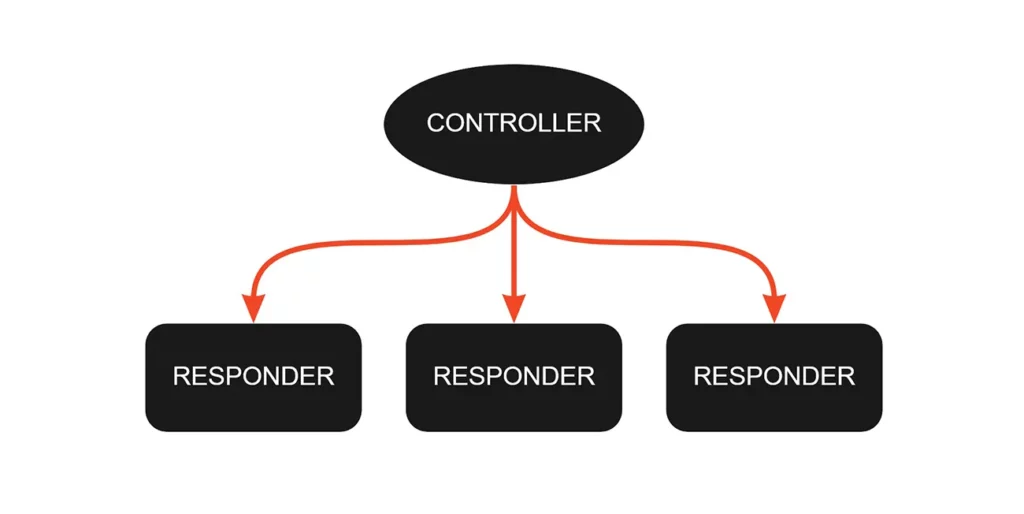
is a variation of the client-server pattern. In this pattern, the client sends a request to the server, which processes the request and then sends a response back to the client. This pattern is often used in web applications, where the client sends a request to the server (usually in the form of an HTTP request), which then processes the request and sends a response back to the client (usually in the form of an HTML page).
The main advantage of the controller-responder pattern is that it can improve performance by allowing the server to process requests in parallel. Additionally, this pattern can improve security by keeping sensitive data on the server and only allowing authorized clients to access it.
There are a few drawbacks to the controller-responder pattern, however. First, it can be more complex to implement than other patterns, as it requires both a controller and a responder. Additionally, this pattern can lead to tight coupling between the controller and responder, making it difficult to change or reuse either component.
These are, of course, only a couple of patterns that software architects use when creating software architecture design, but we hope that these examples helped you to understand better what software architecture is all about.
What is software design?
Software design is the process of planning a software solution. It includes the selection of an appropriate structure, algorithms, data types, and interfaces for the new system. Both the architecture and the detailed design of individual modules should be created when designing software.
The main purpose of software design is to covert user requirements into challenges that the product should solve. The design should result in a set of system specifications that can be used to guide the implementation process.
Creating an efficient and effective software design is a complex task that requires both technical and creative skills. The designer must have a deep understanding of the problem domain and the ability to think abstractly. They must also be familiar with the latest software development technologies and trends.
The software design process takes place within the software development life cycle and usually begins with a feasibility study, which assesses the viability of the proposed solution. If the feasibility study is positive, the next step is to create a high-level design. This design outlines the overall structure of the new system and defines its major components. Once the high-level design is complete, the designer can begin working on the detailed design.
The detailed design phase is where the rubber meets the road. This is where the designer must specify the new system’s details, including its data structures, algorithms, and interfaces. This phase aims to produce a complete and unambiguous specification of the new system.
After the detailed design is finished, it must be reviewed and approved by the project stakeholders. Once approved, the design can be implemented using any suitable programming language and development platform.
How do software design and software architecture work together?

Software architecture is therefore responsible for creating the structure on which the system will be based, but it does not go into details, i.e., how to implement the given elements. Instead, it shows how the given elements should work together and what the connections are between them. Software architecture is, therefore, a bird’s eye view of a product.
Software design, on the other hand, as you already know, focuses mainly on how the given element should be implemented and what may occur within a given element. It is important to realize that software design is a process of breaking down the functionality of a system into smaller modules (components) and then specifying the interfaces between these components.
Software architecture and design are two very important aspects of creating a successful software product. Neither can be neglected or treated as an afterthought. Both have to be given due attention from the beginning of the development cycle. It is only through careful architecture planning and design that a software product can hope to achieve its objectives successfully.
Conclusion
Software architecture is a very important step in the development process. Without it, there would be no chance for any app to be developed successfully. Once the software architecture meets software design, we can call it the system design. So, if you want to build your own application/system/digital product, you should consider its architecture and feasibility first.
